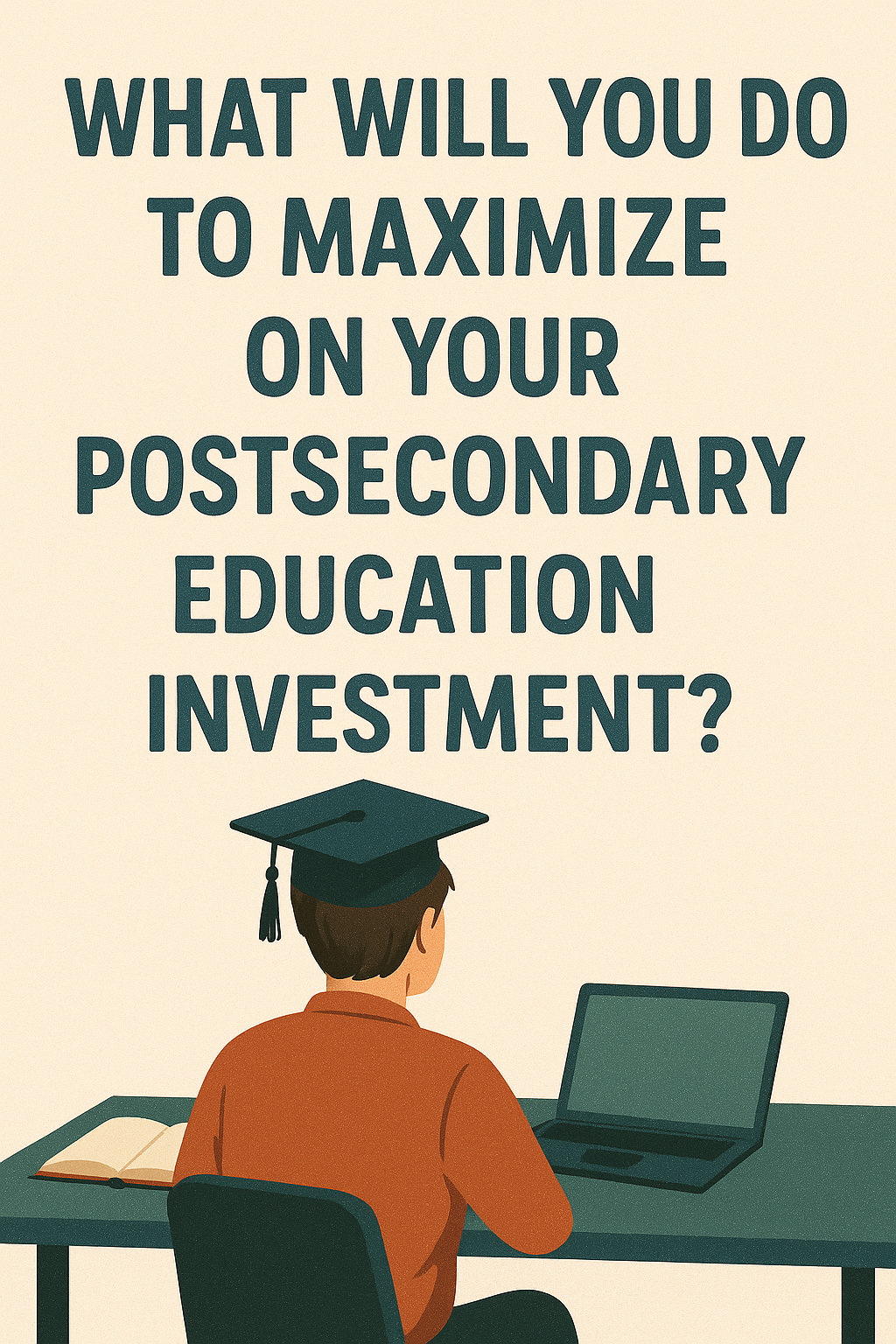Quick Answer: To maximize your postsecondary education investment, focus on selecting a career-aligned course of study, actively build in-demand skills, and take advantage of internships, networking opportunities, and campus resources. Apply for scholarships, minimize unnecessary debt, and pursue certifications or side projects that enhance your employability. This guide walks you through practical strategies—academic, financial, and career-focused—that ensure every dollar and hour spent on your education pays off in long-term value, opportunity, and success.
Introduction
When you think of postsecondary education, you probably picture tuition fees, study materials, exam stress, and endless assignments. But here’s a truth most students overlook: postsecondary education isn’t just a degree — it’s an investment, and like any investment, it must be strategically managed to deliver high returns.
In today’s competitive world, the average cost of college is rising every year. From accommodation to textbooks, from mental energy to time, the price you pay goes far beyond money. Yet, millions of students jump into this journey without a game plan. So the real question is — What Will You Do To Maximize On Your Postsecondary Education Investment?

If you’re someone aiming to score more than just a piece of paper — maybe you want a dream job, a thriving business, or international exposure — you need to go beyond simply attending lectures. You need to optimize your learning, leverage smart tools, and plan with ROI in mind.
This blog will give you a full-proof roadmap to:
- Choose the right courses and programs with high salary outcomes
- Minimize costs and maximize scholarships
- Build long-term career value
- Use online tools and AI effectively
- Improve learning concentration and productivity
And guess what? We won’t just talk theory. You’ll find practical tips, tools, and internal resources to implement right away.
If you struggle with maintaining focus or managing time while studying, don’t worry. We’ve already covered that. Check out our guides:
👉 How to Improve Concentration
👉 5 Proven Strategies on How to Focus
👉 Studying 101: Study Smarter, Not Harder
Still unsure about how to choose the right stream after 10th or which course to opt for after 12th? These curated blogs will guide your decision:
👉 Which Stream Is Best After 10th?
👉 High Salary Courses After 12th Science Without NEET
👉 Best Courses After 12th Commerce
👉 Digital Marketing Courses
👉 Data Science Course
This article is part of our growing postsecondary education series, where we explore everything from What is Postsecondary Education to Average Cost of College and even What Is a Community College?
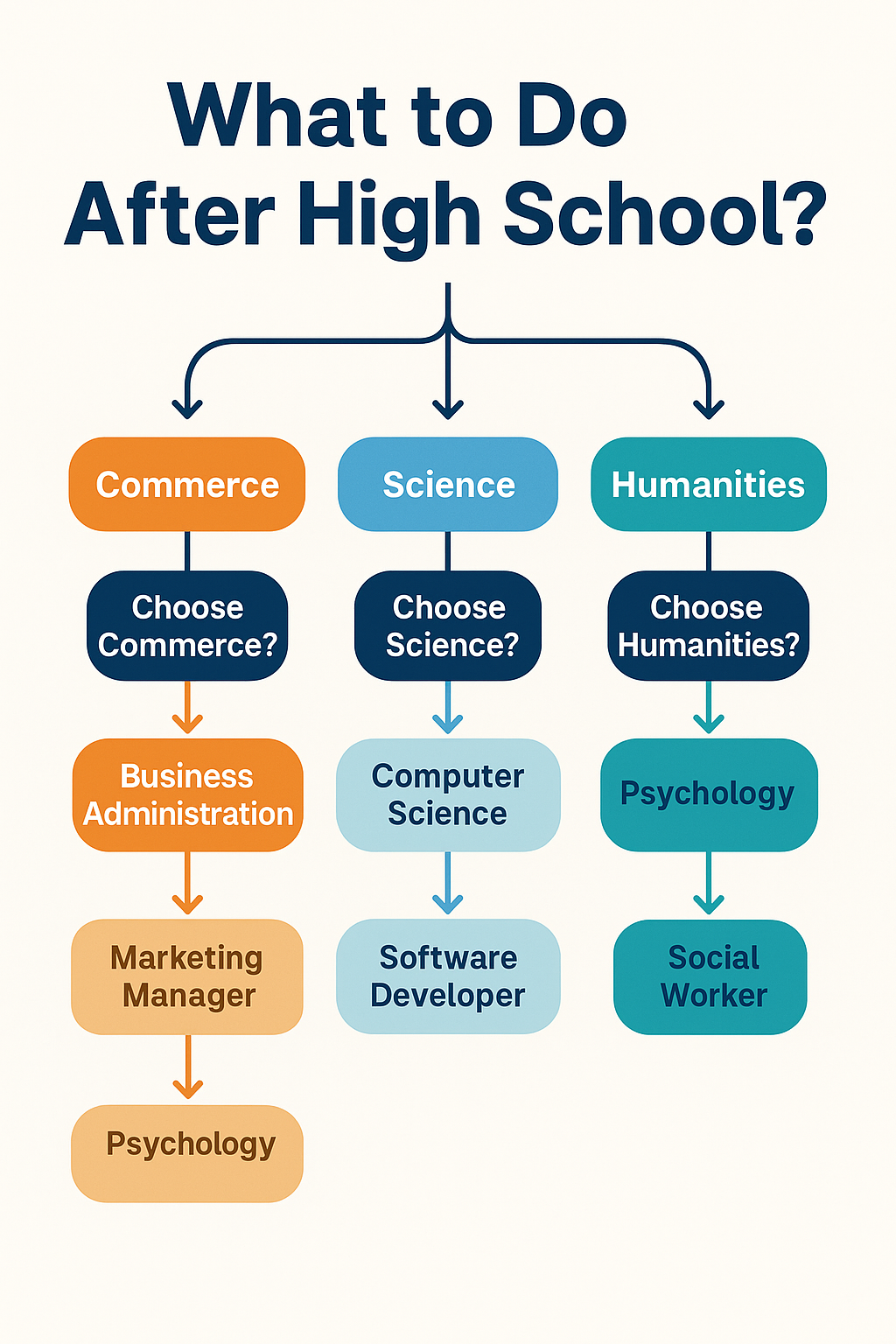
So whether you’re a high school graduate, a parent planning ahead, or a student midway through college, this is your action guide to get more from every rupee, minute, and effort you invest.
Let’s dive deep into why this is the smartest investment you’ll ever make — and how to make sure it pays off.
Why Education Is the Best Investment
Imagine planting a tree today that not only offers shade for life but also bears fruit year after year. That’s what education does. It’s more than a classroom experience — it’s a lifelong investment that yields economic, social, and personal returns for decades.
Historical & Economic Perspective
Throughout history, thinkers and leaders have emphasized the power of education:
💬 “An investment in knowledge pays the best interest.” — Benjamin Franklin
💬 “Education is the most powerful weapon which you can use to change the world.” — Nelson Mandela
From the Industrial Revolution to the Information Age, nations that prioritized education advanced faster in technology, economics, and innovation. Today, the knowledge economy rewards not just hard work but smart, informed work — making education your ticket to staying competitive.

Return on Investment (ROI): Education Pays — Literally
Multiple studies and government reports confirm this: education directly boosts income potential. According to the National Statistical Office of India, graduates earn nearly 2x more than those with only secondary education.
Similarly, U.S. data from the Bureau of Labor Statistics shows:
- High school graduates earn ~$40,000/year
- Bachelor’s degree holders earn ~$68,000/year
- Master’s degree holders earn ~$80,000/year
That’s a 40–80% income premium, simply for investing in higher education.
🔗 Want to calculate ROI on different courses? Explore:
👉 High Salary Courses After 12th Science
👉 Best Courses After 12th Commerce
👉 Digital Marketing Courses
Also, learn more about the real Average Cost of College and how to evaluate if it’s worth it.

Social & Personal Gains: The Silent Profits
While numbers paint a strong case, the non-monetary returns of education are equally powerful:
- Better decision-making & critical thinking
- Higher confidence and communication skills
- More career flexibility in a changing world
- Access to global networks and cultures
Educated individuals are also more likely to vote, volunteer, raise healthier families, and adapt better to technological change — all contributing to stronger societies.
🌐 Read how modern education tools can change your experience:
👉 Why Online Tutoring Is the Future of Education
👉 How Students Can Make Presentations with AI
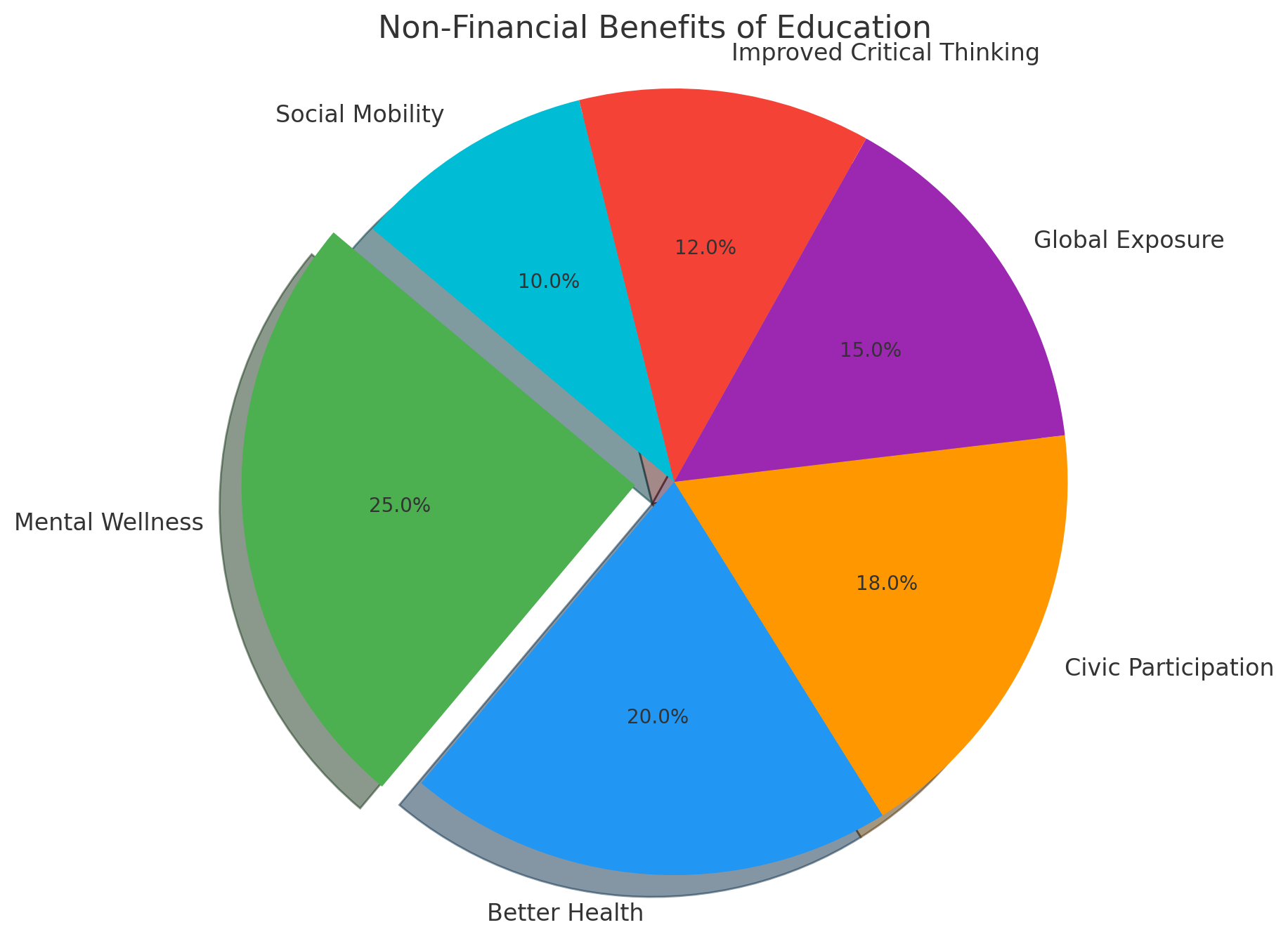
FAQ
Q: Why education is the best investment?
A: Because it multiplies both income and opportunity over a lifetime. It enhances employability, skills, adaptability, and even personal well-being. No other asset offers returns in so many dimensions.
Q: Who said education is the best investment?
A: This phrase is widely attributed to Benjamin Franklin, but it has been echoed by global icons like Nelson Mandela, Kofi Annan, and economists like Amartya Sen, who all underscore that education is the foundation for development and empowerment.
What Counts as Investment in Education?
When people hear the word “investment,” they often think of money. But when it comes to education, investment goes far beyond just tuition fees. To truly maximize your postsecondary education investment, you must understand the various dimensions of what you’re investing — and how each one contributes to your long-term success.
1. Financial Investment
This includes all direct costs:
- Tuition fees
- Books and supplies
- Online learning tools
- Examination and lab fees
- Transportation or relocation costs
- Accommodation and living expenses
In India, private colleges may cost ₹3–10 lakhs, while public institutions like IITs and DU are more affordable but competitive. You can explore your options based on cost, quality, and ROI by reading 👉 Average Cost of College

2. Time Investment
Time is one of the most undervalued forms of capital. Students spend:
- 3–6 years in undergraduate/postgraduate programs
- Countless hours on assignments, lectures, internships
- Time preparing for entrance exams, networking, and placements
Just like money, time must be managed wisely. Use techniques shared in 👉 How to Study Effectively and 👉 Studying 101: Study Smarter, Not Harder to maximize learning in less time.

3. Mental & Emotional Energy
Academic stress, peer pressure, burnout — these are all real. The mental and emotional toll is part of your educational investment. You need energy to:
- Stay motivated during tough exams
- Recover from low grades or setbacks
- Handle personal challenges while studying
Building focus and resilience is critical. Explore 👉 5 Proven Strategies on How to Focus and 👉 How to Improve Concentration to maintain peak mental performance.
4. Opportunity Cost
Every year you spend in education is a year you’re not earning full-time. That’s called opportunity cost — the potential salary you give up while studying. However, this “cost” often pays off later with much higher salaries and job satisfaction.
Choosing a high-ROI field can balance this. Consider:
👉 High Salary Courses After 12th Science Without NEET
👉 Digital Marketing Courses
👉 What Is Work Study?
5. Learning Infrastructure
Investment also includes the resources and tools you use to boost learning:
- High-speed internet for research and online classes
- Laptops, mobile devices, digital storage
- AI tools like note generators, language tutors, flashcard apps
- Libraries, labs, and learning environments
Learn how you can use AI smartly in presentations and studies 👉 How Students Can Make Presentations with AI
6. Personal Development Investment
Education isn’t just about textbooks. You invest in:
- Communication and public speaking
- Time management and leadership
- Networking and social skills
- Extracurriculars and internships
Want to boost personal growth and stand out academically? See 👉 [The Tutor Bridge K–12: One-Stop Solution]
How to Maximize ROI From Your Postsecondary Education
Now that you know what goes into your postsecondary education investment, it’s time to ensure that every second, rupee, and ounce of energy pays off. Whether you’re in a degree program, skill course, or vocational stream, the goal is to get maximum Return on Investment (ROI).
Here’s a step-by-step strategy to help you unlock the full potential of your education — financially, academically, and professionally.
1. Choose High-ROI Courses Aligned With Market Demand
Your choice of course directly impacts your future income and career mobility. Always match your interest + industry demand.
Explore these proven high-ROI career paths:
- 👉 High Salary Courses After 12th Science
- 👉 High Salary Courses After 12th Science Without NEET
- 👉 Best Courses After 12th Commerce
- 👉 Data Science Course
- 👉 Digital Marketing Courses

2. Develop Smart Study Habits
Your time is limited. Studying smarter (not longer) helps you master concepts faster and perform better.
Start here:
- 👉 How to Study Effectively
- 👉 Studying 101: Study Smarter, Not Harder
- 👉 Top 10 Study Tips for Class 12 Board Exams
- 👉 How to Pass Exams Without Studying (for last-minute strategies)
Use tools like Pomodoro timers, mind maps, and AI flashcard generators for efficiency.
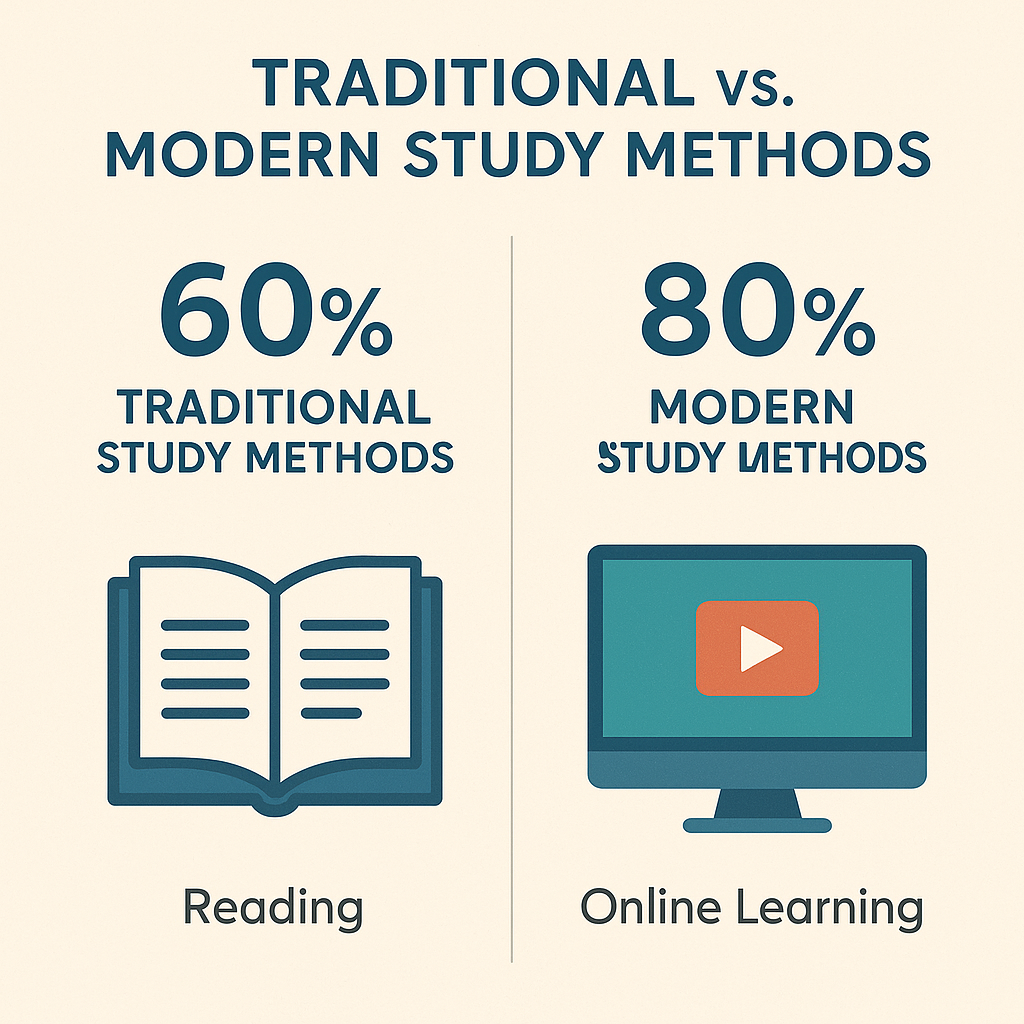
3. Use Free & Affordable Learning Resources
Education doesn’t need to be expensive to be effective.
Maximize your ROI with:
- MOOCs (Coursera, edX, SWAYAM)
- Open-source textbooks and YouTube tutorials
- AI platforms like Grammarly, ChatGPT, Canva for presentations
- 👉 How Students Can Make Presentations with AI
4. Apply Work-Study & Internships to Offset Costs
Internships and work-study programs offer real-world experience and early income.
Start with:
👉 What Is Work Study?
Look for on-campus jobs, freelance gigs, or remote internships related to your field.
5. Take Care of Your Focus and Mental Health
Mental clarity directly impacts your learning ROI.
Explore these focus-building resources:
- 👉 5 Proven Strategies on How to Focus
- 👉 How to Improve Concentration
- 👉 How to Score 100 Marks in Maths (focus + practice combo)
Also consider learning techniques like meditation, journaling, and screen detox breaks.
6. Learn Soft Skills and New Languages
Employers value more than just your degree.
Invest in:
- Communication and presentation skills
- Teamwork and leadership roles
- Learning new languages (especially for global opportunities)
👉 How to Learn the Korean Language
👉 How to Learn the Russian Language
7. Track Progress & Adjust Strategy
Just like financial investments, review your educational goals quarterly:
- Are your grades improving?
- Are you getting internship opportunities?
- Have you built a professional network?
Use a goal sheet or journal to self-evaluate monthly.
BONUS: Use Supportive Communities and AI Tutors
Don’t isolate yourself. Surround yourself with mentors, peers, and online communities like Reddit, Quora, or even The Tutor Bridge’s blogs.
Also, read:
👉 Why Online Tutoring Is the Future of Education
👉 The Tutor Bridge K–12: One-Stop Solution
Common Mistakes That Reduce ROI in Postsecondary Education
Even with the best intentions, many students unintentionally sabotage their educational investment. Identifying and avoiding these pitfalls can make the difference between graduating with potential vs. graduating with regret.
Let’s explore the most common mistakes that drastically reduce your ROI — and how to avoid them.
1. Choosing a Course Without Research or Purpose
Blindly following peers or parental pressure often leads to choosing the wrong stream.
💡 Fix It: Always consider career scope + personal interest + future demand
Read:
👉 Which Stream Is Best After 10th?
👉 What Is Postsecondary Education?
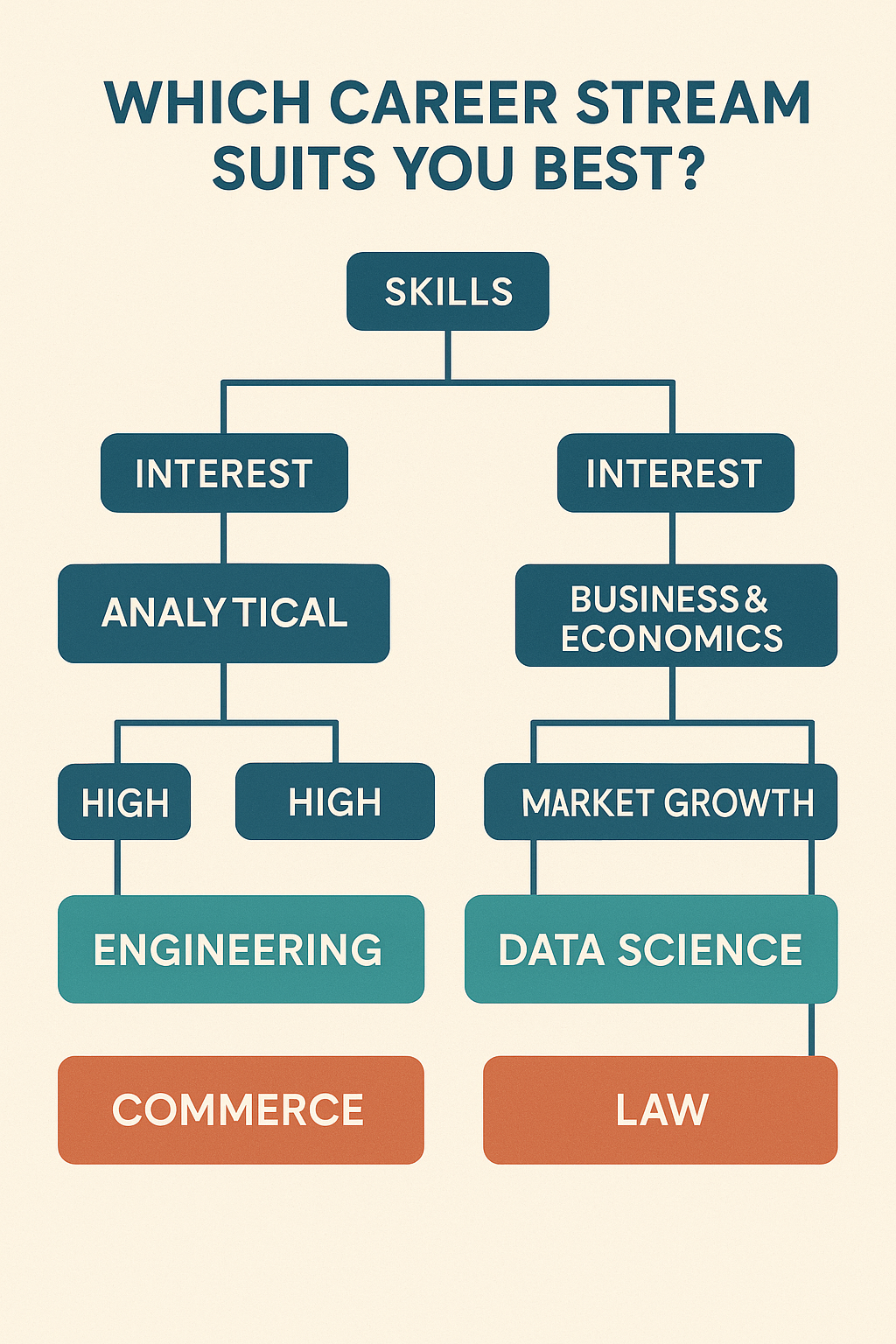
2. Focusing Only on Marks, Not Skills
In India, there’s an obsession with marks. But employers want:
- Communication skills
- Problem-solving
- Leadership
- Digital literacy
💡 Fix It: Pair academic goals with skill development, online certifications, and soft skill enhancement.
Try:
👉 How to Study Effectively
👉 The Tutor Bridge K–12: One-Stop Solution
3. Poor Time Management
Time is your most valuable educational currency.
- Students often waste hours on social media
- Procrastinate until the night before exams
- Study hard, not smart
💡 Fix It: Apply time-blocking, Pomodoro, and weekly planning methods.
Check out:
👉 How to Pass Exams Without Studying (last-minute fix)
👉 Studying 101: Study Smarter, Not Harder
4. Ignoring Career Planning Until Final Year
Waiting until graduation to think about your career is one of the biggest ROI killers.
💡 Fix It: Start early!
Build a portfolio, take internships, attend webinars, and connect with alumni.
Explore:
👉 Digital Marketing Courses
👉 Data Science Course
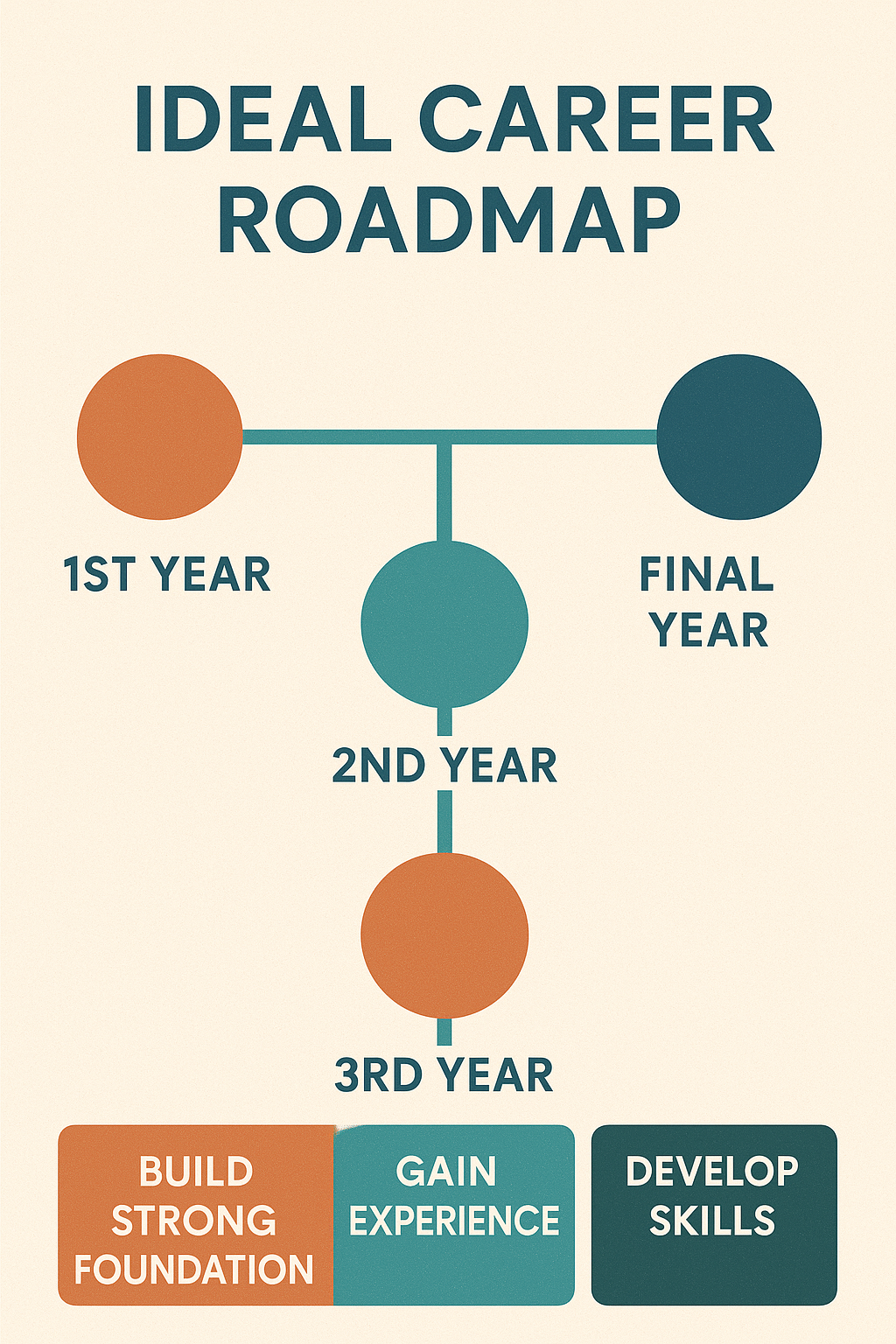
5. Underutilizing Free Online & AI Tools
Many students still rely on old-school methods and ignore free, powerful digital tools.
💡 Fix It: Use tools for:
- AI presentations (Make Presentations with AI)
- Focus apps
- Mind maps and flashcards
- Grammar and research tools (Grammarly, Perplexity, etc.)
6. Avoiding Language and Communication Mastery
Weak English or poor communication skills can limit opportunities in MNCs and competitive exams.
💡 Fix It: Learn global languages to widen career reach.
👉 What Is the Meaning of ESL?
👉 How to Learn the Russian Language
👉 How to Study Korean
7. Not Understanding the Real Cost of Education
Many students underestimate how expensive postsecondary education really is — leading to debt or dropped out plans.
💡 Fix It: Plan budgets early. Explore scholarships and understand average tuition.
👉 Average Cost of College
👉 What Is a Community College?
8. Not Prioritizing Mental Health
Burnout, anxiety, and lack of motivation reduce performance drastically.
💡 Fix It: Practice meditation, breaks, journaling, and reach out for help.
Explore:
👉 How to Improve Concentration
👉 5 Proven Strategies on How to Focus
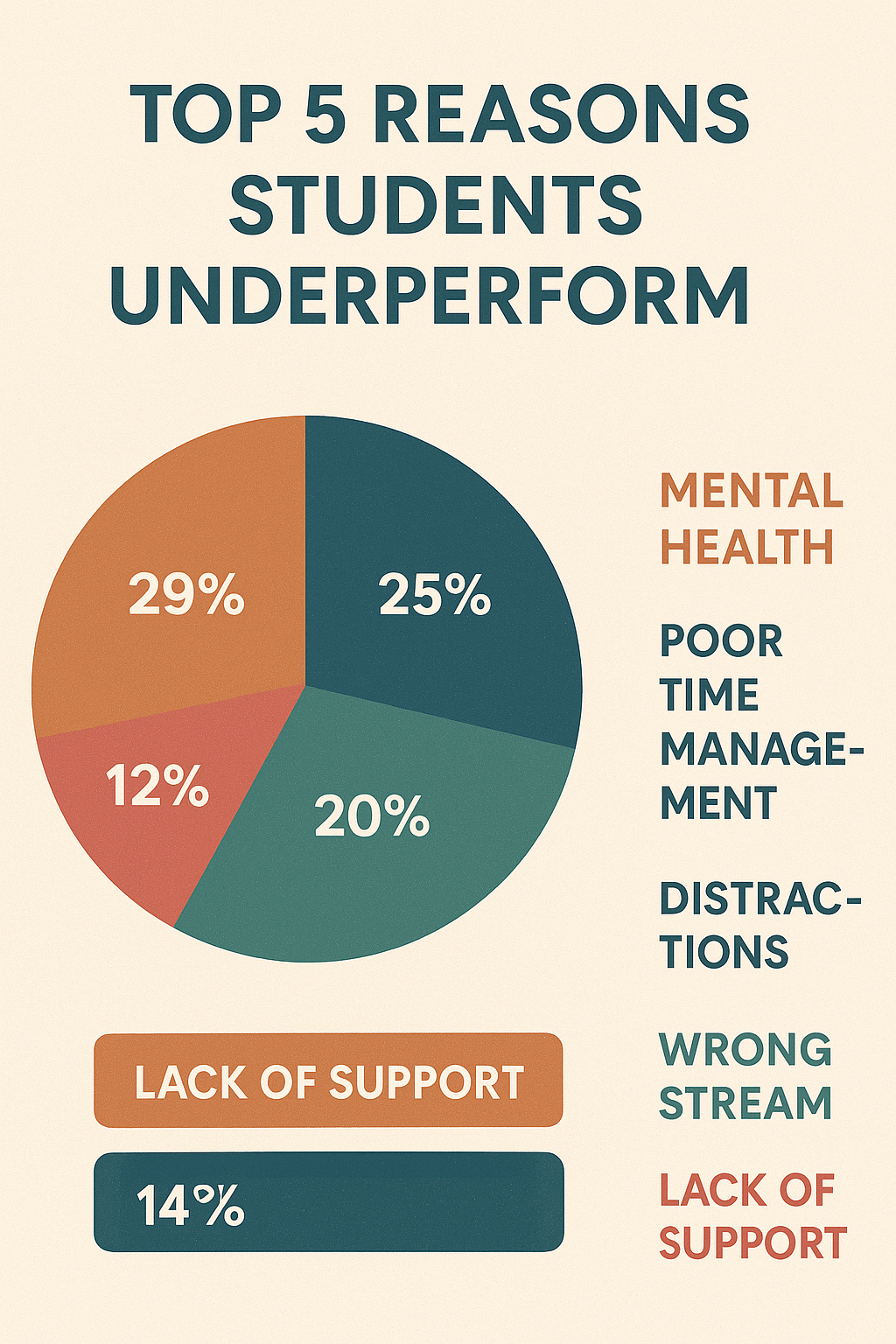
Recap Table: Mistakes vs. Fixes
| Common Mistake | Why It Hurts ROI | How to Fix It |
|---|---|---|
| Wrong course choice | Misalignment with job market | Career research, consult mentors |
| Ignoring soft skills | Limits employability | Communication training, presentations, extracurriculars |
| Bad time management | Low grades, last-minute panic | Study plans, focus strategies |
| Late career planning | Fewer job offers, low confidence | Start internships, portfolio building from year 1 |
| Not using tech/AI tools | Less efficiency, low innovation | Explore AI, EdTech tools, free certifications |
| Weak language skills | Blocks global opportunities | Learn ESL, Korean, Russian, etc. |
| Poor financial planning | Debt, dropout risk | Budgeting tools, understand costs, part-time jobs |
| Mental health neglect | Anxiety, burnout, demotivation | Focus, breaks, support groups, self-care routines |
FAQs
Why is education the best investment?
Because it offers the highest lifetime ROI — financially, socially, and psychologically. A degree often leads to better job stability, income growth, and personal development.
(Source: World Bank, 2023)
What is investment in education?
Investment in education includes time, money, and effort spent on:
- Tuition & books
- Skill development
- Certifications & workshops
- Language learning
- Emotional & mental development
It’s a long-term input for lifelong output.
शिक्षा सबसे अच्छा निवेश क्यों है?
क्योंकि यह आपको सिर्फ नौकरी नहीं देता, बल्कि सोचने का तरीका, आत्मनिर्भरता और समाज में सम्मान भी देता है।
यह एक ऐसा निवेश है, जिसका रिटर्न जिंदगी भर मिलता है।
शिक्षा में निवेश क्या है?
- कॉलेज फीस
- ऑनलाइन कोर्सेज
- समय व ऊर्जा का निवेश
- स्किल्स और कम्युनिकेशन सीखना
यह सब कुछ शिक्षा में निवेश का हिस्सा है।
किसने कहा कि शिक्षा सबसे अच्छा निवेश है?
बेंजामिन फ्रैंकलिन ने कहा था:
“An investment in knowledge pays the best interest.”
यह उद्धरण आज भी उतना ही प्रासंगिक है।
भारत शिक्षा में कितना निवेश करता है?
भारत अपने वार्षिक बजट का लगभग 2.9% से 4.5% शिक्षा पर खर्च करता है।
(Source: India Economic Survey, 2023)
क्या भारत शिक्षा के लिए एक अच्छा देश है?
भारत की शिक्षा प्रणाली में विविधता और वैश्विक पहुंच की क्षमता है — विशेष रूप से तकनीकी और व्यवसायिक क्षेत्रों में।
हालांकि सुधार की जरूरत भी बनी हुई है।
क्या भारत में शिक्षा लाभदायक है?
हां, यदि आप सही कोर्स, स्किल्स और नेटवर्किंग रणनीति अपनाएं — तो भारत में शिक्षा से बड़ा करियर ROI मिल सकता है।
भारतीय शिक्षा प्रणाली कितनी सफल है?
यह परीक्षा केंद्रित है, लेकिन अब धीरे-धीरे नई राष्ट्रीय शिक्षा नीति (NEP 2020) के तहत कौशल, नवाचार और क्रिटिकल थिंकिंग पर भी ज़ोर दे रही है।
Conclusion
Education isn’t just a cost — it’s your most powerful investment.
When you choose your stream wisely, master real-world skills, and use your resources efficiently, the returns are limitless.
📚 Whether you’re preparing for boards, planning higher education, or seeking scholarships:
Every hour you invest today creates decades of opportunity tomorrow.
What You Can Do Right Now:
- Bookmark this guide
- Share it with your friends preparing for college
- Post your experiences on Reddit/Quora
- Explore helpful resources on The Tutor Bridge Blog
Comment below:
What’s one decision that improved your education ROI?
We’d love to hear your story.
